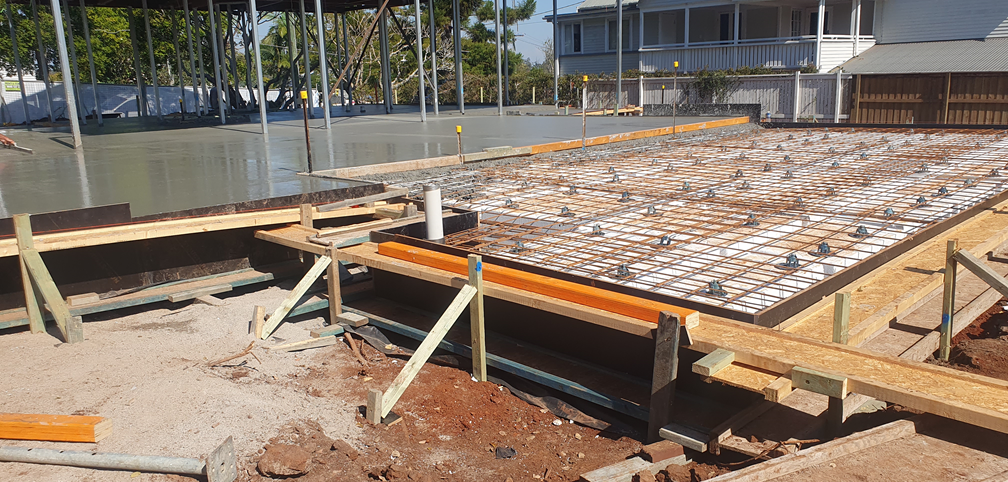I suppose every builder will have a pet peeve. Mine is that I cannot stand sloppy slab setouts & Boxing.
It started when I first trained as a formwork carpenter on large commercial sites decades ago.
Form workers create molds or forms that shape concrete structures. These forms determine the final appearance and dimensions of walls, columns, beams, and slabs.
Properly installed formwork ensures that concrete is poured accurately and securely.
Being a formwork carpenter is a big responsibility on large scale commercial projects because accuracy and safety is paramount.
The strength and stability of concrete structures depend on precise formwork installation. Form workers ensure forms are aligned, and securely braced to withstand the weight of wet concrete.
Efficient formwork setup speeds up construction timelines and reduces project costs.
When co-ordinated with other trades (such as steel fixers and concrete workers) to ensure a seamless construction, their work impacts subsequent stages of the project.
Formwork failure on a large commercial site can have catastrophic consequences with safety issues. On a domestic slab, a small failure would result in a deviation in the slab edge. This could result in an improperly supported structural frame, or an inability to finish the wall cladding in a tradesman-like manner.

Over the years I have observed gaps in the formwork skillset of concreters in the home building industry when it comes to formwork for the slab. This is by no means universal, and I have engaged many concreters that are highly skilled. But they are becoming hard to find.
Many skilled form workers are retiring, and adequately filling the void is becoming challenging.
It is for this reason I prefer to install the concrete formwork myself and have trained my team in the finer techniques of doing a proper job.
It is always a relief to encounter a concreter with the skillset that meets my expectations. It means I can focus my teams’ efforts elsewhere and allows me to focus on more productive activities.

